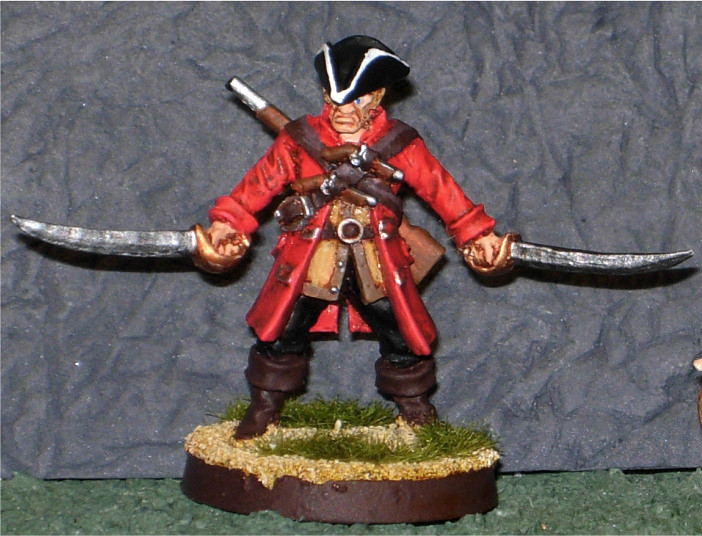When Clash of Spears was announced, it really was a simple choice for me to dive in! The Kickstarter in late 2019 was the perfect opportunity for me to explore ancient wargaming at what I thought would be a manageable scale.
Plus, with the setting being the days of the Roman Republic, I could gather an Iberian force. That appealed to me greatly, because there is a very good chance that my ancestors fought in that region of Spain and in that timeframe. In fact, based on one of the areas to which I can trace my lineage back to 800AD, I can even pinpoint what I believe to be the most likely tribes that I am descended from.
The likelihood is that my family is descended from the Arevaci or the Pellendones, two tribes that operated in the northern part of the province of Soria, and the southern part of La Rioja.
I had always steered clear of wargaming in ancient times because of the sheer number of figures needed. I did not have the time or patience to paint 500 or so models.
But Clash can be fought with between 35 and 60 models, a very comfortable number of figures for me to paint in a reasonable amount of time, or so I thought.
Before even receiving the Kickstarter armies, I bought some packages of Victrix Iberian warriors, on foot and mounted, to start building my forces.
I began assembling them, focusing on a unit of caetrati (skirmishers who carry a small round shield, the caetra from which they get their name) and some cavalry. I started by painting the horses, using them to test the Citadel Contrast Paints which were growing in popularity at the time. And then, I stopped.
It was a combination of life circumstances that are not worth getting into now, but suffice to say that the partially assembled and painted figures sat... and sat... and sat.
Fast forward nearly two and a half years, and my friend Alvaro (co-designer of Clash of Spears with his brother Francisco) organized a tournament to be held at the local wargaming store, Giga Bites Cafe. (Details of the tournament itself can be seen in this post.)
Circumstances being much different now, and much more conducive to having some free time for gaming, I decided to dust off the partial army and get a warband ready for the tournament. Of course, things got a little unexpectedly complicated, and I wasn't able to really dig in to the project until the week before the tournament. This would be a challenging task - to complete a 44-figure army in under a week!
The army list I built consists of 46 figures:
2 leaders, one on horseback
8 slingers (6 of which were already painted)
20 caetrati (12 of which were already painted, but none of them had shields)
6 noble cavalry riders (all six horses were finished, but none of the riders)
10 veteran scutarii (none painted)
So, the clock was ticking and the race was on - paint 21 infantry figures plus seven riders and one horse, and complete shields for all of them. While that may not sound tough, and for many people it's all in a day's work, for me it would be a feat.
 |
| The unpainted portion of the warband, after priming. |
 |
| The scutarii. I removed these figures from the round bases they were on and moved them to the square bases. |
 |
| Shields, so many shields. |
 |
| A horse, a horse, my kingdom for a horse! |
 |
| Ahhhhh! What is that? |
 |
| This is what I see with the visor, though the photo doesn't really do the visors justice. |
 |
| Tunics, belt and footwear completed. |
 |
| Shield backs painted (the finished shield at left was one on which I tested my methods first). |
 |
| Cutting out and applying the transfers. |
 |
| Job's a good 'un! Shields completed and ready for their owners. |
 |
| The unwashed massed (top) and the washed. |
Once the final wash was completely dry, I completed the bases. This post details my basing process. By this time it was Friday afternoon and the tournament was scheduled for Saturday morning. I let the bases dry as long as I felt I could get away with, then dry brushed on some detail and added tufts of grass.
 |
| This picture from one of my games shows the cavalry charging into a formation of Roman troops. |
 |
| The scutarii obey their leader's order to form a wall of shields. (This is why I changed their bases to square.) |
By the way, the people that say a fully painted army gets better dice rolls are lying to you. You can read about just how good my dice-rolling skills were here.
The next challenge for me is to add some more units to the Celtiberians so I can have some flexibility when selecting a force. The standard Clash of Spears game is 900 points, and that is exactly what I have painted, so I do not have any room to make changes in troop selection.
After adding a few units, I hope to knock out some smaller painting projects, which I will share here, for a variety of other games.
Then, I will tackle a Carthaginian army, including at least one elephant! Go big or go home, right?
'Til next time!













































